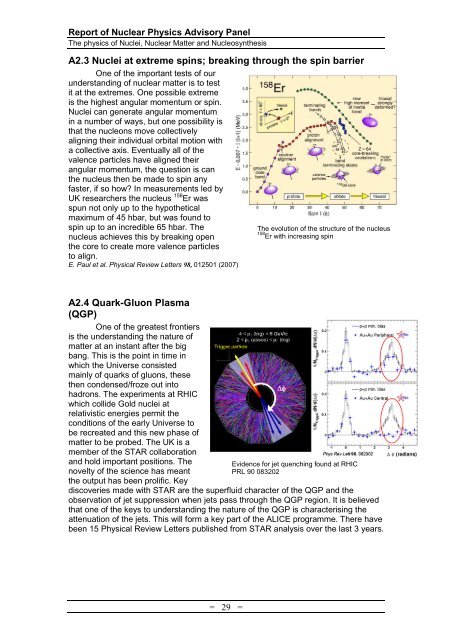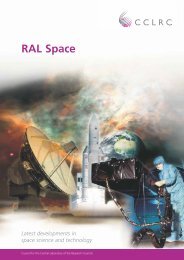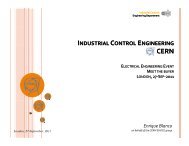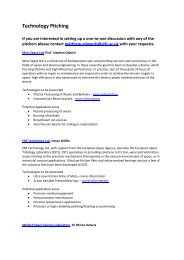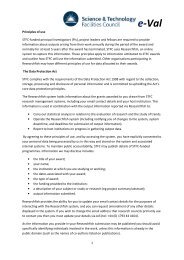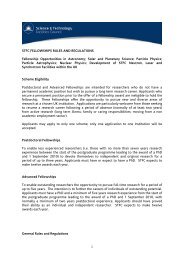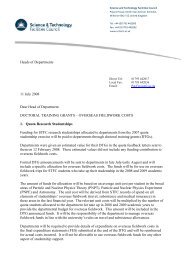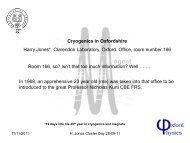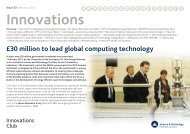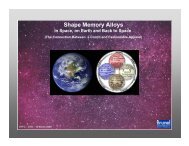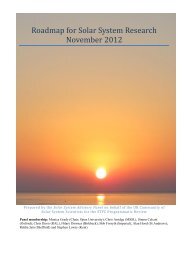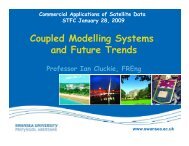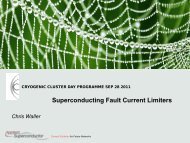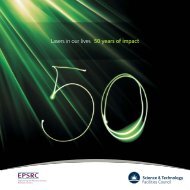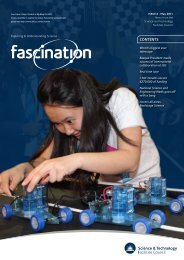Nuclear Physics Advisory Panel (NPAP) report (PDF-3.8 MB) - STFC
Nuclear Physics Advisory Panel (NPAP) report (PDF-3.8 MB) - STFC
Nuclear Physics Advisory Panel (NPAP) report (PDF-3.8 MB) - STFC
You also want an ePaper? Increase the reach of your titles
YUMPU automatically turns print PDFs into web optimized ePapers that Google loves.
Report of <strong>Nuclear</strong> <strong>Physics</strong> <strong>Advisory</strong> <strong>Panel</strong><br />
The physics of Nuclei, <strong>Nuclear</strong> Matter and Nucleosynthesis<br />
A2.3 Nuclei at extreme spins; breaking through the spin barrier<br />
One of the important tests of our<br />
understanding of nuclear matter is to test<br />
it at the extremes. One possible extreme<br />
is the highest angular momentum or spin.<br />
Nuclei can generate angular momentum<br />
in a number of ways, but one possibility is<br />
that the nucleons move collectively<br />
aligning their individual orbital motion with<br />
a collective axis. Eventually all of the<br />
valence particles have aligned their<br />
angular momentum, the question is can<br />
the nucleus then be made to spin any<br />
faster, if so how? In measurements led by<br />
UK researchers the nucleus 158 Er was<br />
spun not only up to the hypothetical<br />
maximum of 45 hbar, but was found to<br />
spin up to an incredible 65 hbar. The<br />
nucleus achieves this by breaking open<br />
the core to create more valence particles<br />
to align.<br />
E. Paul et al. Physical Review Letters 98, 012501 (2007)<br />
The evolution of the structure of the nucleus<br />
158 Er with increasing spin<br />
A2.4 Quark-Gluon Plasma<br />
(QGP)<br />
One of the greatest frontiers<br />
is the understanding the nature of<br />
matter at an instant after the big<br />
bang. This is the point in time in<br />
which the Universe consisted<br />
mainly of quarks of gluons, these<br />
then condensed/froze out into<br />
hadrons. The experiments at RHIC<br />
which collide Gold nuclei at<br />
relativistic energies permit the<br />
conditions of the early Universe to<br />
be recreated and this new phase of<br />
matter to be probed. The UK is a<br />
member of the STAR collaboration<br />
and hold important positions. The<br />
novelty of the science has meant<br />
the output has been prolific. Key<br />
Evidence for jet quenching found at RHIC<br />
PRL 90 083202<br />
discoveries made with STAR are the superfluid character of the QGP and the<br />
observation of jet suppression when jets pass through the QGP region. It is believed<br />
that one of the keys to understanding the nature of the QGP is characterising the<br />
attenuation of the jets. This will form a key part of the ALICE programme. There have<br />
been 15 Physical Review Letters published from STAR analysis over the last 3 years.<br />
= 29 =


